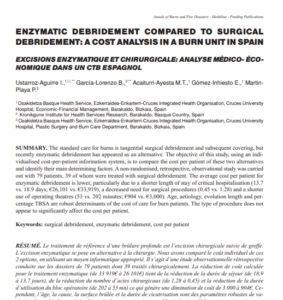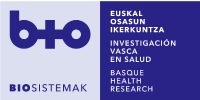The article, which compares two interventions for large burn patients, not only compares the cost of both alternatives but also investigates the factors determining the cost of these patients.
 Enzymatic debridement has emerged as an alternative to surgical debridement in large burn patients. This procedure allows a faster and more selective debridement of burned tissue, causing less blood loss, reducing the total surface area requiring skin grafting, and providing better health outcomes than surgical debridement.
Enzymatic debridement has emerged as an alternative to surgical debridement in large burn patients. This procedure allows a faster and more selective debridement of burned tissue, causing less blood loss, reducing the total surface area requiring skin grafting, and providing better health outcomes than surgical debridement.
In recent years, Value-Based Healthcare has advocated a new paradigm that calls for a transformation of the traditional healthcare model. In this context, the measurement of healthcare costs constitutes a fundamental element. To this end, the Ezkerraldea-Enkarterri-Cruces Integrated Health Organization (OSI EEC) has designed, developed, and implemented a Cost-per-patient and Cost per Disease Information System. The system applies a bottom-up methodology and connects all the sources of information generated from clinical practice, integrating healthcare information with economic information, so that the unit cost of the healthcare resources used in the care of each patient can be calculated and, therefore, the total cost generated by the care provided to each patient.
The aim of the article published in Annals of Burns and Fire Disasters is to compare the cost per patient of enzymatic debridement and surgical debridement in major burn patients and to identify the main determinants of resource consumption.
Access the full article by clicking on the following link: http://www.medbc.com/meditline/articles/vol_61/num_1/text/vol61n1p1576.pdf





